#Sculptures of Akhenaten and Nefertiti
Explore tagged Tumblr posts
Text
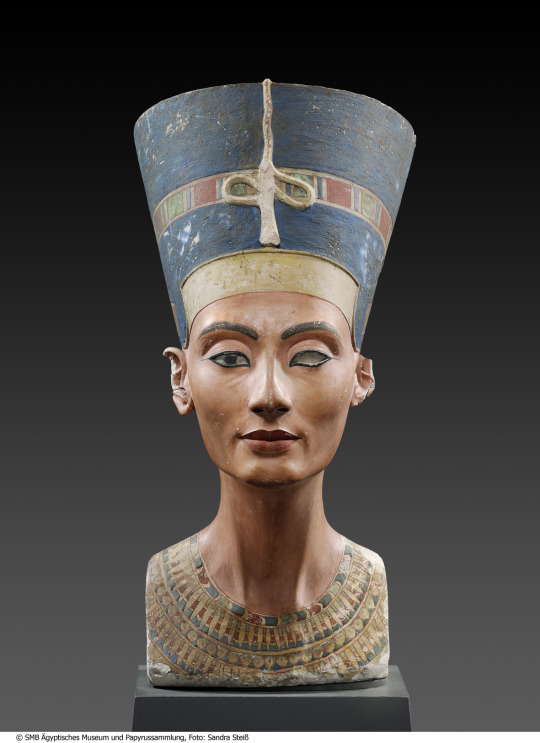
~ Bust of Queen Nefertiti.
Period: 18th Dynasty, New Kingdom; reign of Amenhotep IV/Akhenaten
Medium: Limestone, painted; stucco; beeswax, black; rock crystal.
#ancient#ancient art#history#museum#archeology#ancient egypt#ancient sculpture#ancient history#archaeology#egypt#egyptian#egyptology#Nefertiti#new kingdom#18th Dynasty#Amenhotep IV#Akhenaten
1K notes
·
View notes
Text


Akhenaten and Nefertiti
#egyptian history#ancient egypt#egyptian#egyptian pharaoh#akhenaten#nefertiti#ancient history#history#art#ancient sculpture#ancient civilizations
479 notes
·
View notes
Text
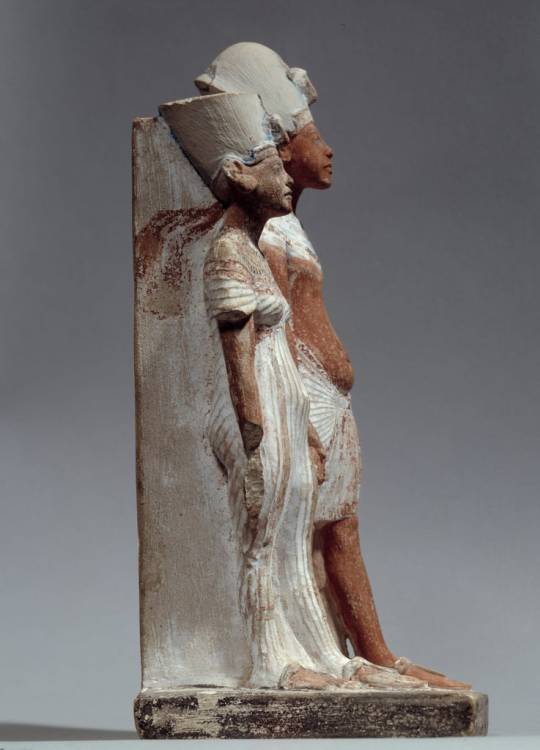
Statue of Akhenaten and Nefertiti
New Kingdom, 18th Dynasty, ca. 1353-1336 BC. From Tell el-Amarna (Akhetaten). Now in the Louvre. E 15593
Read more
228 notes
·
View notes
Text
From Sand Sculpture Festival, Egypt. Akhenaten and Nefertiti.
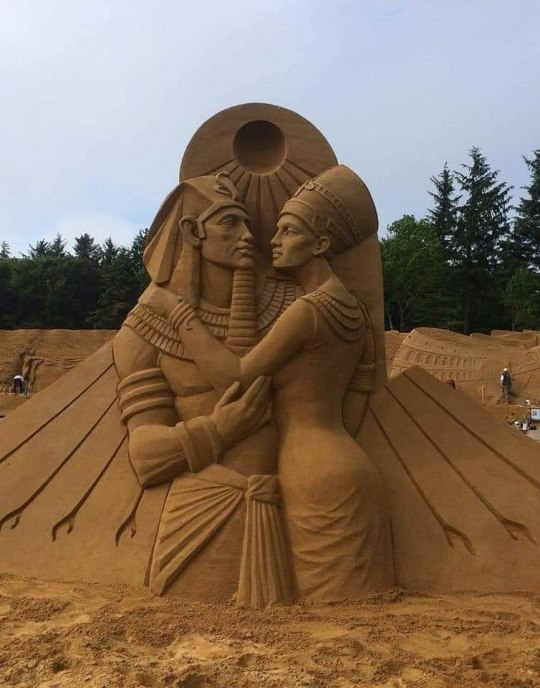
#akhenaten#nefertiti#egyptian art#egyptian#art#egyptian artist#sculpture#egypt#sand sculpture#sand sculpture festival#love#festival#modern sculpture#modern#egyptian queen#egyptian king
8 notes
·
View notes
Text

05-15-24 | Akhenaten and Nefertiti ruled Egypt 3,300 years ago. via platongrant. misterlemonztenth.tumblr.com/archive
20 notes
·
View notes
Text

akhenaten & nefertiti, c.1353-1336 b.c. ~ musée du louvre. E 15593
48 notes
·
View notes
Text

NEFERTITI BUST | 1345 BC | by THUTMOSE
The NEFERTITI BUST, is a masterpiece that offers a unique insight into ancient EGYPTIAN artistry and culture. This sculpture, is a lifelike representation of QUEEN NEFERTITI, known for its exceptional craftsmanship and symbolic significance.
The bust is carved from a single block of limestone and covered with painted stucco layers, showcasing a symmetrical face with intricate details like softly curved cheekbones, a strong chin, and a sharp nose. NEFERTITI is depicted with golden-brown skin, red lips, colored jewellery, and a crown, with crystal-set eyes and a missing left eye inlay. The sculpture's colors were achieved using various pigments like powdered frit, orpiment, and coal with wax as a binding medium.
The BUST OF NEFERTITI symbolizes the power of the sun and the strength of royalty in ancient EGYPTIAN culture, reflecting the classical EGYPTIAN art style. It is theorized that the bust served as a sculptor's modello, used as a reference for creating other official portraits.
NEFERTITI, whose name translates to "the beautiful one," was the wife of PHARAOH AKHENATEN, known for her beauty and strength as depicted in the sculpture. The bust's discovery in THUTMOSE'S workshop offers insights into the artistic process of that era.
In conclusion, the NEFERTITI BUST stands as a timeless representation of beauty, power, and artistic excellence from ancient EGYPT, showcasing THUTMOSE'S skill in capturing the essence of the queen with remarkable detail and symbolism.
19 notes
·
View notes
Text
"Genes go back to the 7th Ancestor"
In Egypt, we have a saying that goes like: "genes go back to the 7th ancestor", which is visualized in the photos below of modern Egyptians and their lookalikes from ancestors thousands of years ago. No DNA test needed! Or if you still need one, check the article at the end of the post!
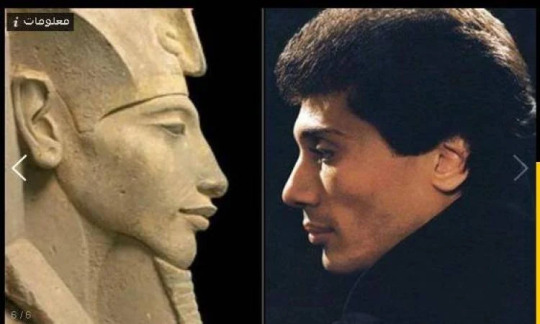
Statue of Egyptian King Akhenaten | Egyptian Artist: Aly Al-Haggar (1954-)
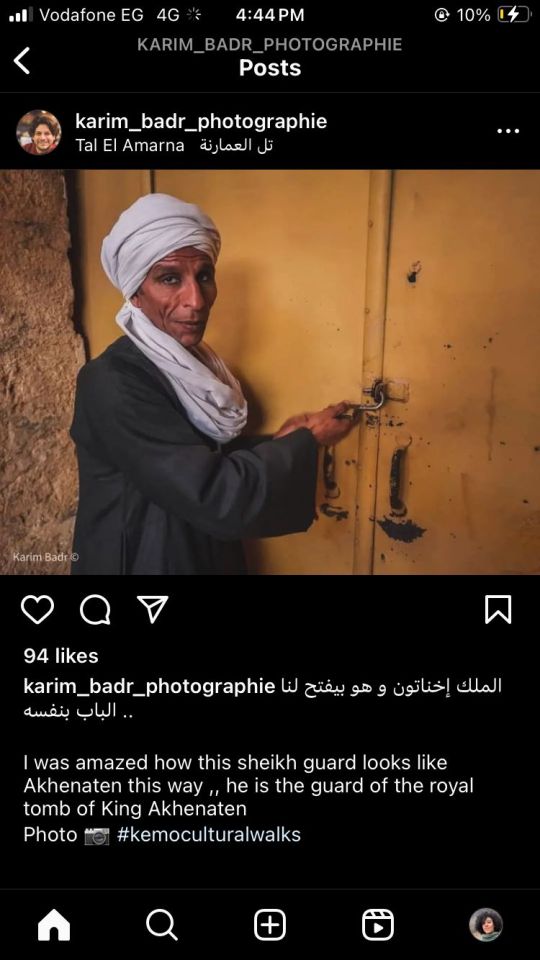
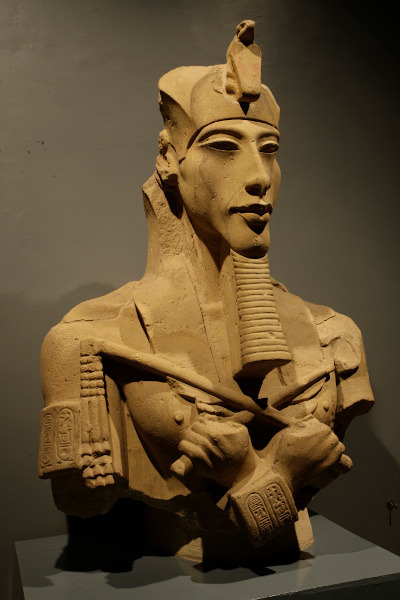
Kamaal, current guardian of the tomb of Akhenaten, bears uncanny similarity to Akhenaten, as if he is his own reincarnation. His photo went viral on social media recently (March, 2024).
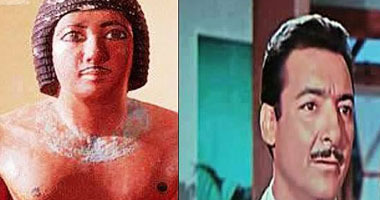
Statue of the Egyptian Scribe Ka-Irw-Khufu (more information in the references below) | Egyptian Actor: Rushdi Abaza (1962-1980)
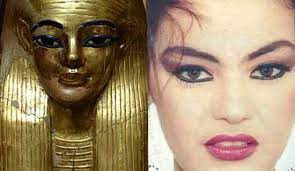
Death Mask of Yuya (now in the Egyptian Museum) | Egyptian Actress: Sherihan (1964-)
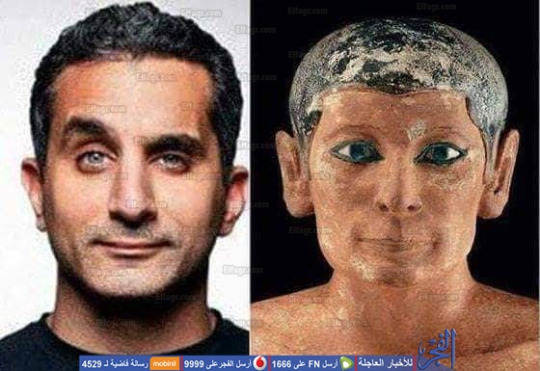
Egyptian-American Celebrity: Bassem Youssef (1974-) | Statue of The Seated Scribe (4th or 5th Dynasty of Egypt, c. 2600 - 2350 BCE, from Saqqara, on display in the Louvre,��Paris.)
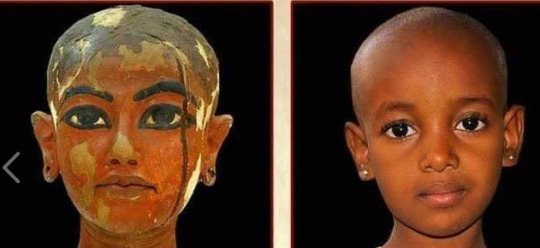
Statue of Tutankhamun in his childhood | Modern Egyptian Child from Aswan

Statue of Vizier Sennefer (more information below) | Egyptian Actor: Khaled El-Nabawy (1966-)
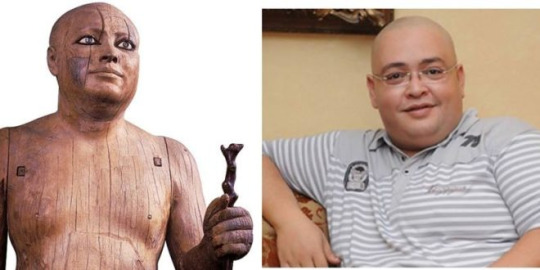
Ancient Egyptian wooden statue of the Priest Kaaper (Sheikh-El-Balad who has an interesting story. Link in the references below.) | Egyptian Actor: Ahmed Rizq (1976-)


And everyone's absolute favorite, Egyptian Actress Sawsan Badr (1957-), doppelganger of Queen Nefertiti.
But Afrocentrists be like:
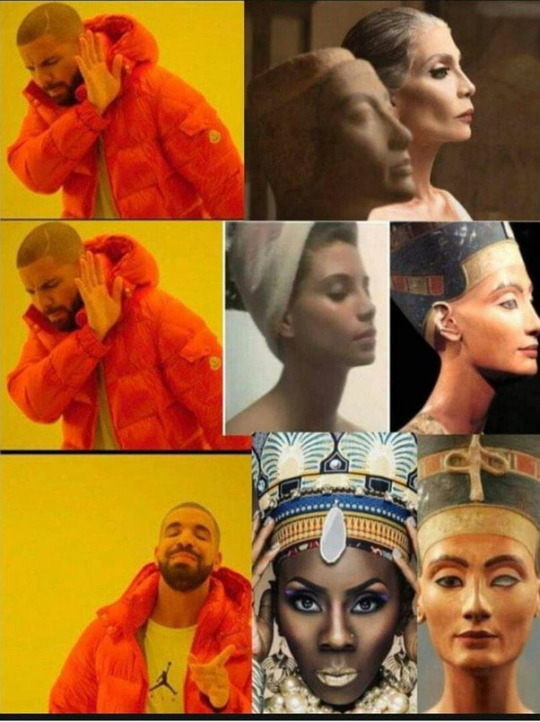
References:
Death Mask of Yuya. Egyptian Museum, https://en.wikipedia.org/wiki/Yuya#/media/File:Mummy_mask_of_Yuya.jpg.
“Egyptian Woman Traces Her DNA to Ancient Mummy from Saite Dynasty.” Egypt Independent, 16 May 2023, egyptindependent.com/egyptian-woman-traces-her-dna-to-ancient-mummy-from-saite-dynasty/.
Egypt Museum. “Colossal Statue of Akhenaten.” Egypt Museum, 23 Nov. 2023, egypt-museum.com/colossal-statue-of-akhenaten/.
“Statue of Ka-Aper.” Discover Egypt’s Monuments - Ministry of Tourism and Antiquities, egymonuments.gov.eg/collections/statue-of-ka-aper-2/. Accessed 16 Feb. 2024.
The Seated Scribe, Ka-Irw-Khufu, found in August of 1957 in his tomb at Giza. Photographed at the Cairo Museum in November of 1963. | Located in: Egyptian Museum, Cairo. --- Image by © Roger Wood/CORBIS
The Seated Scribe. World History, 4th or 5th Dynasty of Egypt, c. 2600 - 2350 BCE, from Saqqara, on Display in the Louvre, Paris., https://www.worldhistory.org/image/5858/the-seated-scribe/.
Vizier Sennefer, detail from sculptural group depicting Sennefer with his wife Hatshepsut, painted stoneware, 68x85 cm. New Kingdom, 18th Dynasty. Now at the Louvre.
XBP341818 Head of the child king emerging from a lotus flower, from the Tomb of Tutankhamun (c.1370-1352 BC) New Kingdom (stuccoed & painted wood) (see also 149406) by Egyptian 18th Dynasty (c.1567-1320 BC); Egyptian National Museum, Cairo, Egypt; (add.info.: size of a new-born child; found at entrance of the tomb; ); Photo eBoltin Picture Library; Egyptian, out of copyright Media ID 22679652 © Boltin Picture Library / Bridgeman Images.
2 notes
·
View notes
Text
Excellent pictures taken at the Neues Museum of Berlin by a young man on YouTube called The King's Monologue. It's a Livestream called The Neues Museum of Berlin BLEW MY MIND (Pts 1 and 2). He makes very scrupulous observations that many brush over or block out. At the bottom of this compilation is his trip to the Louvre Museum in Paris reveal some shocking rarities.
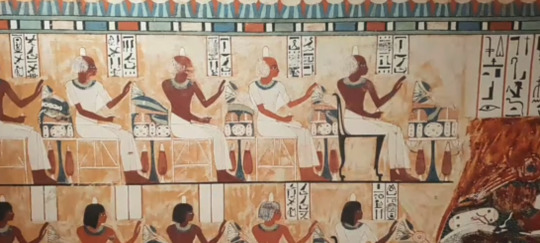
color variation in males from User, Elephantine, dynasty 18.
Whole scene
https://www.archaeology.wiki/wp-content/uploads/2014/03/elephantine-tomb.jpg

.

.
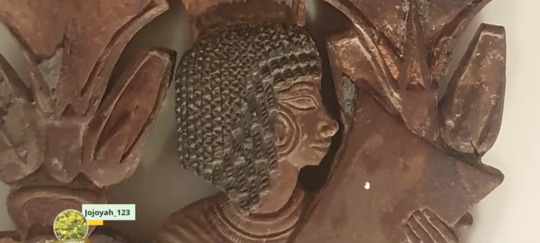
.
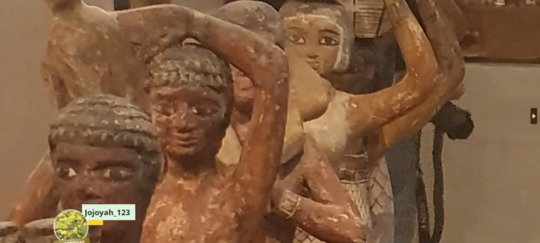
.
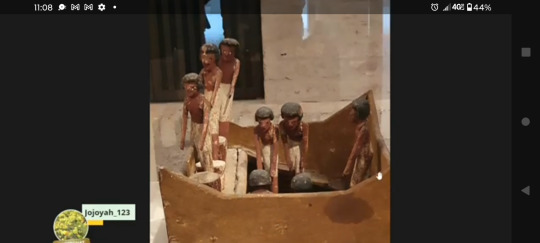
.

Early dynastic period
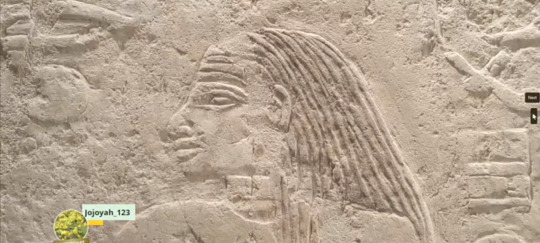
Early era
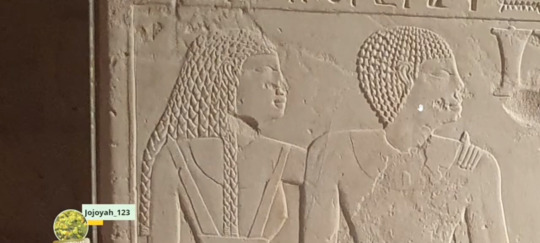
.

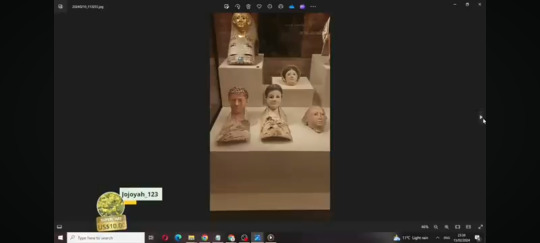
Roman era

. woman just as dark reddish brown as the man

A lady from Antigua informed him that the style is called sisterlocks in modern times. These hairstyles were worn in West and Central Africa as well. See Diop's statement in the link about traditional hair of women in Senegal before the 1930s, both natural and wig (only seen in non Islamic areas after that time)...
1
https://www.tumblr.com/shwat2013/680165437249585152/whether-wig-or-not-i-think-people-sometimes?source=share. .
2
Wolof girl Senegal 1800s
a
https://64.media.tumblr.com/a236b85b80a40ea0690388ff73d5decc/c0bc9aed5175f391-df/s640x960/2ec47a43c894be96d47a61bc4ca79f771a80e1c4.jpg .
b
https://commons.wikimedia.org/wiki/File:Senegal-thioup-bazin.jpg#mw-jump-to-license
3
Just like ancient Egypt, the same wig form is traditionally worn in Nambia, Congo, Angola (of old), East Africa etc. Also worn naturally
link
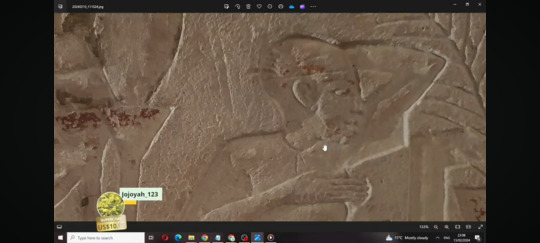
.

. Sahure 5th dynastic period
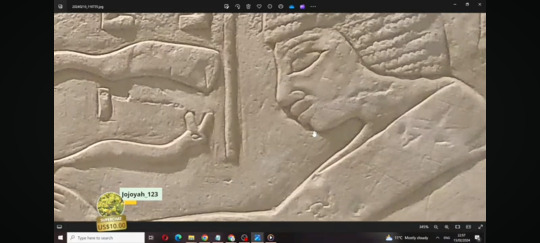
Early period

Early period
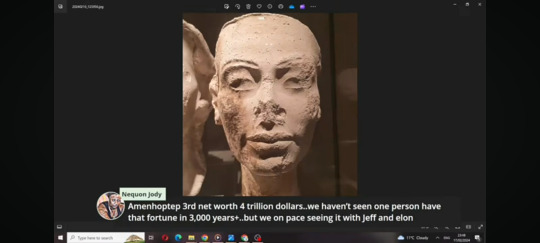
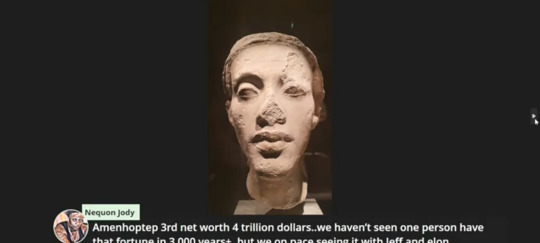
Have to point out that these are actual faces of Akhenaten and Nefertari because it's taken from a cast mold. THIS MEANS YOU'RE LOOKING AT THEM. See museum link below picture for more on this technique of sculptor Thutmose. As we see the museum label once informed us that it's one of the plaster molds, but now just says portrait heads. The following picture is not from the YouTuber

The following description is from the Egyptian Museum in Berlin, about one plaster cast mask (Inv.-No. ÄM 21356), but it really speaks on the technique of all portraits like it of the era. Most are from the ancient artist Thutmose of the Achet-Aton (today called Amarna), in Middle Egypt, which was the capital of Egypt during the reign of Akhenaten and Nefertiti. It reads… This portrait study gives a unique view of the work technique of the artist; first a form was taken directly from the subject"s face and a gypsum copy was made from the mould. The copy was then finished by the sculptor in various details, especially the eyes since these had to be closed when the mask was taken from the face. In these rare instances we are directly confronted with 'real' people even if we do not know their names or anything else about them.
Scroll to Mask from Amarna Portrait of a Man.
http://www.egyptian-museum-berlin.com/c52.php
To see more actual faces from cast molds (rare), scroll down to "A few more every day Egyptians of the Amarna period", near bottom of the compilation in this link
https://www.tumblr.com/shwat2013/677380292714037248/amenhotep-iii-at-the-new-york-metropolitan-museum?source=share
picture with old museum label
https://www.reddit.com/media?url=https%3A%2F%2Fi.redd.it%2F3q2tykijo0da1.jpg.

In mythology, Memnon was a king of Aethiopia (Sudan in this case) and son of Tithonus and Eos. As a warrior he was considered to be almost Achilles' equal in skill. During the Trojan War, Here, he is compared to Akhenaten
Princess
link
18th dynasty man from Louvre

link

.Akhenaton on the left and a Nubian at the Flinders Petrie Museum of archeology, London, England on the right
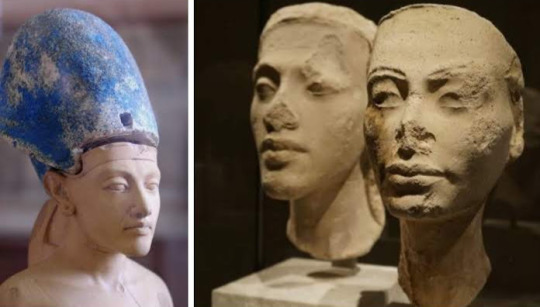
This is a more of a stylized "artist conception on the left". We can see on the actual face from the sculptor studio on the right, he really didn't have a straight pointed nose...but rather more rounded, wide and flat. Strangely, I can see the faint character of the real person in the stylized conventional portraits
..

. Tiye
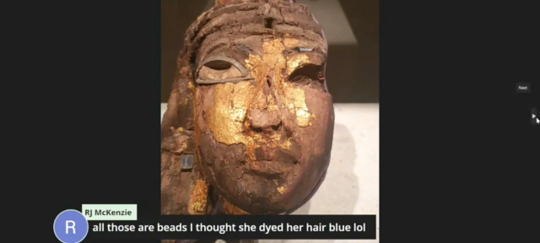
.Tiye or a relative
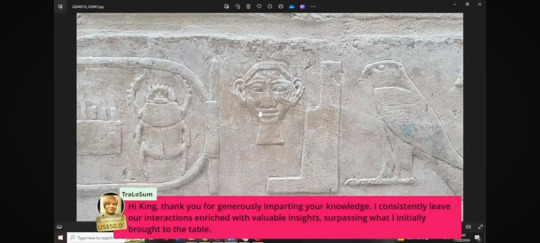
.

. hieroglyph for face
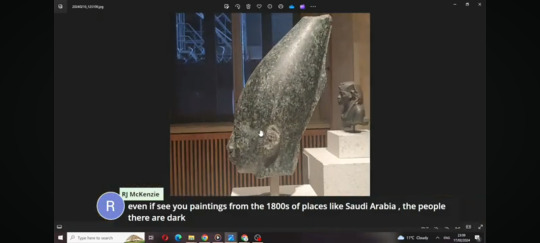
. Amenenehat III
.
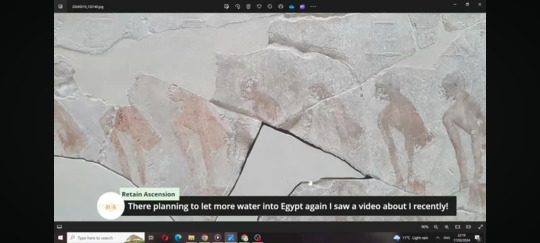
.
More from the YouTuber. This time at the Louvre Museum (2 parts)
Part 1
Ink
Part 2
link
Clean, clear and unadulterated images from the video "MOST BEAUTIFUL NON-ROYAL TOMBS! WESTERN THEBES (LUXOR) EGYPT", as she walks through... These are wonderful and unbias. There's no way you can see these and not at least ask yourself... are these the people of the Aswan Elephantine area who lean more "black" in appearance
Video link
Be sure to stop at the bottom where it says "More from @afcnamrcn23". Don't be distracted by the pictures and links under that. They will occur again so that you can continue with the main post in sequence.
0 notes
Text



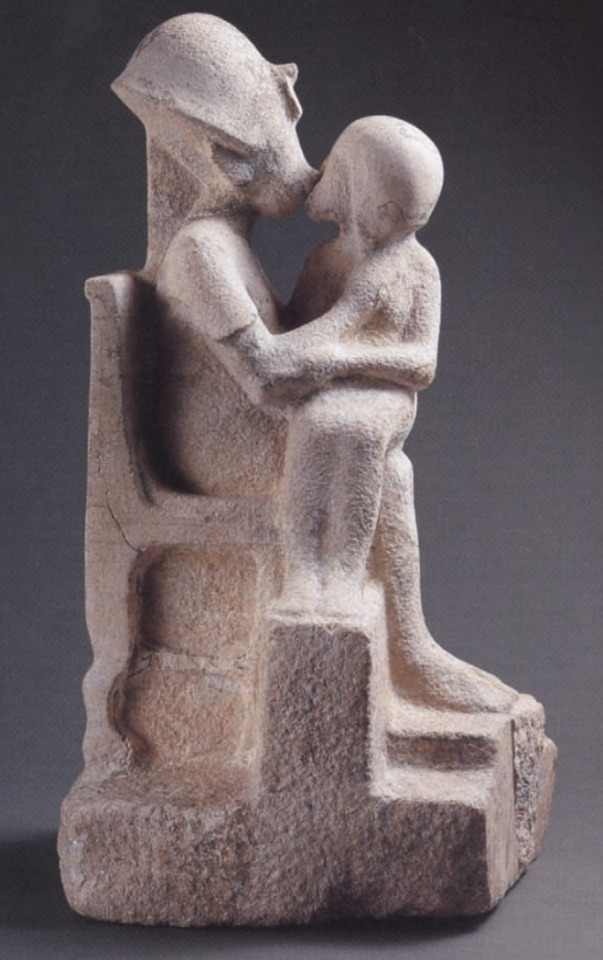
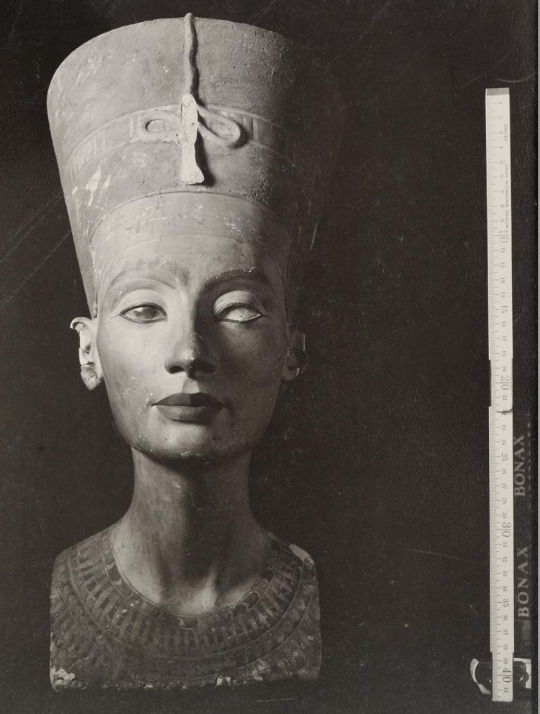
Fragments from the studio of Thutmose, sculptor to Akhenaten and Nefertiti. Ruins of Akhtaten, Amarna, Egypt.
101 notes
·
View notes
Text

Fragment of an ancient Egyptian stele (painted limestone) showing Queen Nefertiti tying an ornamental collar around the neck of her husband, the pharaoh Akhenaten. Artist unknown; ca. 1345 BCE (18th Dynasty, New Kingdom). Now in the Neues Museum, Berlin. Photo credit: Osama Shukir Muhammed Amin FRCP/Wikimedia Commons.
#art#art history#ancient art#Egypt#Ancient Egypt#Egyptian art#Ancient Egyptian art#Nefertiti#Akhenaten#Amarna Period#18th Dynasty#New Kingdom#stele#stela#sculpture#relief sculpture#stonework#carving#Neues Museum
198 notes
·
View notes
Photo





Fragments from Amarna Period: torso of Nefertiti | nose and lips of Akhenaten | probable face of Queen Tiye | torso of Akhenaten | fragment of a Queen's Face
12 notes
·
View notes
Photo

#tbt I was excited to find this older lifesize plaster reproduction last year at a small auction in Sweden of one of the most famous #artworks the #sculpture of Queen #Nefertiti, which simply means: “the beautiful one has come." The original found in 1912 in the studio of the sculptor Tuthmosis at Amarna, by German archaeologists and displayed in #Berlin since 1913, where I saw it as a young child and my grandmother had a small replica of it. The painted bust of #QueenNefertiti shows her with unusually shaped eyes, probably an actual physical trait. #Art of the Amarna period, when Akhenaten and Nefertiti reigned, is noted for its naturalistic depiction of plants, animals and, in some cases, candid scenes of daily life. One might suggest that the shape of Nefertiti's eyes are indeed truthful. The fact that she is depicted with a #pharaoh’s crown led archeologists to believe that Nefertiti was seen as #Akhenaten’s equal and had the powers of a pharaoh. She may have even ruled as a pharaoh after the death of her husband and before the reign of King #Tutankhamen. When the Nazis came to power, they took possession of the majority of #antiquities & hid many valuable & historic works of art from all over the world. Hitler said, “I will never relinquish the head of the Queen.” The bust was discovered in a salt mine by American forces during the occupation. Nefertiti has been the source of inspiration for other #artists as well #FredWilson’s “Grey Area (Black Version)”, 1993 (pic 5) Using a restored reproduction of the bust. Wilson's practice is of using museum pieces to investigate questions of #racial identity and history. ''It plays on claims for Nefertiti & ancient #Egypt as positive exemplars of #blackness within #AfricanAmerican culture, but also on the debates around Nefertiti's actual racial identity and the obscured histories of #African peoples, alluded to in the title 'Grey Area'.'' OR German artist #IsaGenzken, works from the ‘Nefertiti’ series from 2015-2017. Pic w @desti.knee taken @DavidZwirner’s booth @artbasel Miami in 2017 price tag was around $150k I think. I paid $400 for mine ☺️ #artcollector #artconsultant #artadvisor #contemporaryart https://www.instagram.com/p/BsK5CC8FqjV/?utm_source=ig_tumblr_share&igshid=iix4k99xypf7
#tbt#artworks#sculpture#nefertiti#berlin#queennefertiti#art#pharaoh#akhenaten#tutankhamen#antiquities#artists#fredwilson#racial#egypt#blackness#africanamerican#african#isagenzken#artcollector#artconsultant#artadvisor#contemporaryart
2 notes
·
View notes
Text
Some breathtaking sculptures throughout the time
Venus of Willendorf (25,000 BP)
It has been suggested that she is a fertility figure, a good-luck totem, a mother goddess symbol, or an aphrodisiac made by men for the appreciation of women. It is an 11.1-centimetre-tall (4.4 in) Venus figurine estimated to have been made around 25,000-30,000 years ago.

Nefertiti Bust (1345 BCE)
The Nefertiti Bust is a painted stucco-coated limestone bust of Nefertiti, the Great Royal Wife of Egyptian pharaoh Akhenaten. It symbolizes both the power of the sun and the strength of royalty in ancient Egyptian culture.
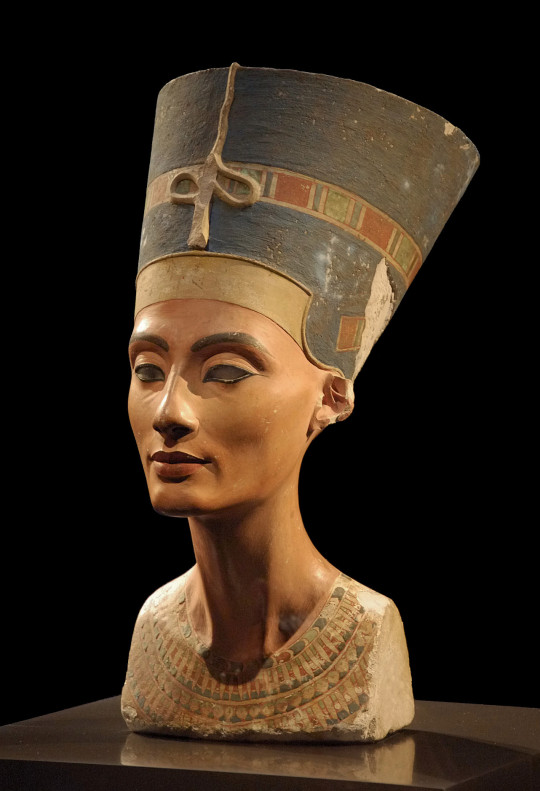
The Terracota Army (210–209 BCE)
The discovery of the Terracotta Army is important because of the information it gives historians about daily life in the Chinese Qin dynasty. The figures show armour and weapons, and the tomb contains many real artefacts such as chariots, weapons, pottery, and the human remains of workers who built it. It is a form of funerary art buried with the emperor.
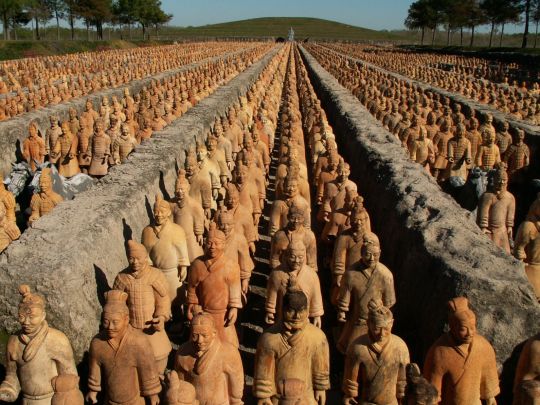
Laocoön and His Sons (323 BCE – 31 CE)
In true Hellenistic fashion, Laocoön and His Sons showcases an interest in the realistic depiction of movement. In the action-packed scene, three figures frantically try to free themselves from the grasp of sinuous serpents.
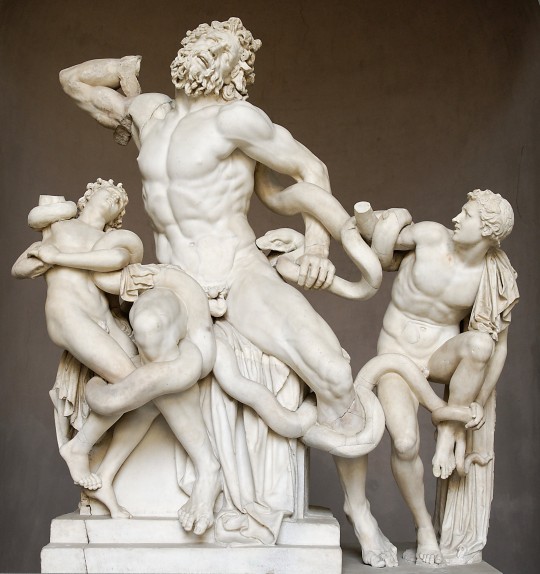
David of Michelangelo (1501– c. June 8, 1504)
During the High Renaissance, Michelangelo created figurative works that focused on balance, harmony, and the ideal form. David showcases these artistic sensibilities through his lifelike, asymmetrical posture—known as contrapposto or “counterpose”—and his realistic and highly detailed anatomy.

The Ecstasy of St. Teresa (1647–1652)
It depicts a scene from the saint's spiritual autobiography. Teresa recalls an angel wielding a fire-tipped spear who repeatedly pierces her heart, causing her to experience spiritual bliss.

Perseus with the Head of Medusa (1800 and 1801)
Perseus has decapitated Medusa because the gaze of Medusa turned all who looked at her to stone. Perseus guided himself by her reflection in a shield given him by Athena and beheaded Medusa as she slept. He then returned to Seriphus and rescued his mother by turning Polydectes and his supporters to stone at the sight of Medusa's head. The said sculpture is a depiction of that.

All the pictures are collected from Pinterest and briefings have been extracted from various articles through google.
#sculpture#michelangelo#david#artistic#art#medusa#mythology#perseus#teresa#renaissance#terracota#soldiers#china#venus#nefertiti#ancient egypt
16 notes
·
View notes
Photo

The Wilbour Plaque (Amarna period, 1352-1336 BC) Brooklyn Museum
The plaque is named for Charles Edwin Wilbour, a 19th century Egyptologist who donated the plaque to the museum.
A masterpiece of “Amarna art” to the modern viewer but was little more than a reference piece in its day. It was most likely carved by a very skilled artist and hung from a cord (note the circular hole in the top) at a workshop to serve as a guide for other artisans working there. The scratches around the faces could have come from the artisans sharpening their tools before carving.
The piece portrays Nefertiti (right) and more than likely Akhenaten (left), her heretic husband who broke dramatically from long established artistic and religious convention. The elongated cranium, the heavy almond-shaped eyes, the full lips, and rounded chin were all very novel to the artistic representation of Akhenaten (p.k.a Amunhotep IV). Akhenaten is one of the most well known Pharaohs in modern times. His other worldly appearance and his worship of the sun certainly make him an interesting case study. Nefertiti is probably most known for her bust, a true masterpiece of sculpture.
Akhenaten is one of my favorite pharaohs. I think he has certainly earned the title of “the world’s first individual”. While I love the devotion to tradition so typical of Egyptian art and religion, its exhilarating to see such a deliberate and stylized break from that tradition. Akhenaten I also enjoy seeing Nefertiti in contexts other than her iconic bust.
(Source) (Source)
#akhenaten#nefertiti#amunhotep iv#ancient egypt#egyptian art#ancient egyptian art#art history#egyptology#egypt#history blog#brooklyn museum#wilbour plaque#art history blog#my photo
37 notes
·
View notes
Text

Sculpture of Queen Nefertiti and her Pharaoh Akhenaten
Blokus International Sand Sculpture Festival, Denmark 2014
17 notes
·
View notes
